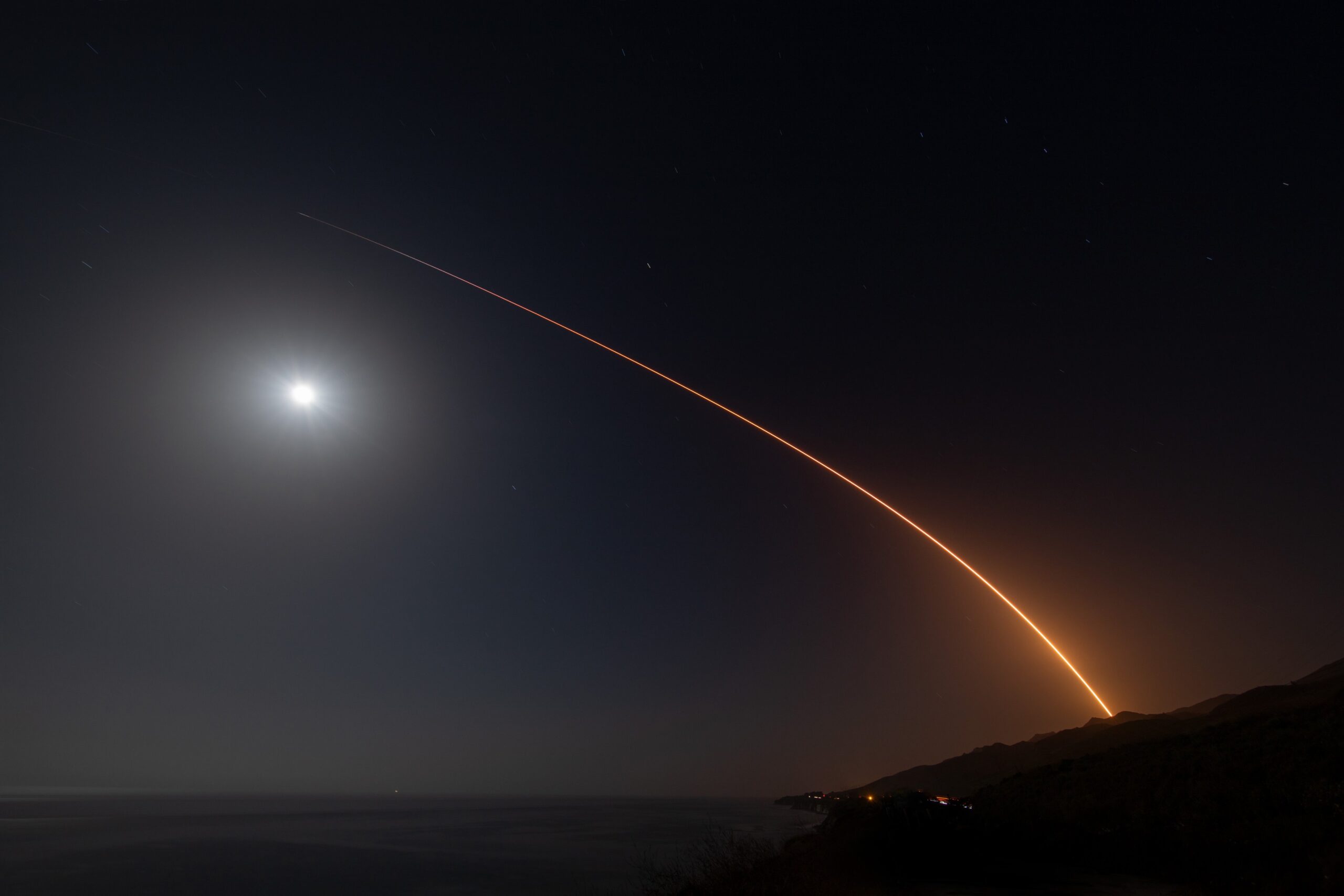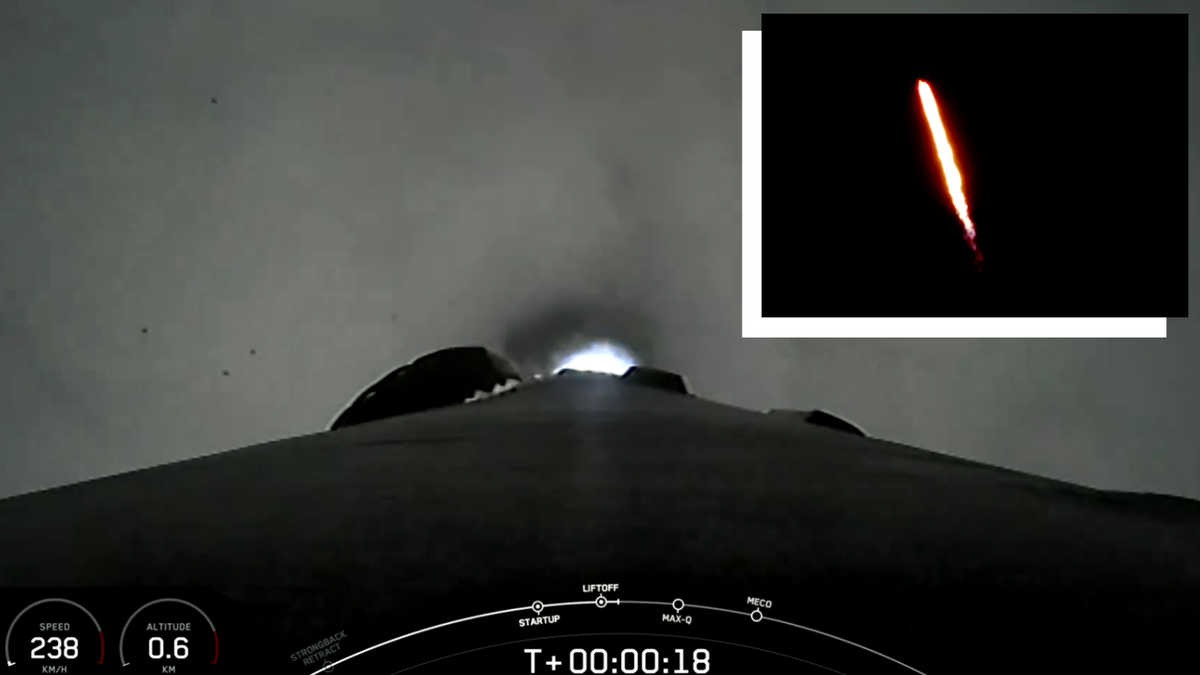SpaceX has successfully launched the first batch of satellites for the National Reconnaissance Office (NRO), the initiation of a new reconnaissance satellite constellation. The mission, designated NROL-146, saw the rocket lift off from Space Launch Complex 4 East (SLC-4E) at Vandenberg Space Force Base in California.

Also Read: Blue Origin Launches First Crewed Mission Since 2022 Engine Malfunction
The primary goal of the NROL-146 mission was to deploy a series of reconnaissance satellites for the NRO enhancing the U.S. government’s surveillance and intelligence-gathering capabilities.
The specific details and capabilities of the satellites remain classified in line with the typical secrecy surrounding NRO missions.
Falcon 9 Launch Details:
- Rocket: SpaceX Falcon 9
- Launch Complex: Space Launch Complex 4 East (SLC-4E)
- Base: Vandenberg Space Force Base, California
- Time of Launch: 1 a.m. PDT (4 a.m. EDT, 0800 UTC)
- First Stage Booster: B1071, marking its 16th flight
The first stage booster used in this mission, tail number B1071 has a history within the SpaceX fleet. This was its 16th mission. Transporter Rideshare Flights was also launched two Transporter rideshare missions.
A little over eight minutes after liftoff, the B1071 booster successfully landed on the SpaceX droneship, ‘Of Course I Still Love You’ (OCISLY). This landing is the 91st recovery for OCISLY and the 310th booster recovery for SpaceX to date.
While the specific details of the NROL-146 payload are classified, the mission is believed to include a batch of Starshield satellites. These satellites are a government-specific variant of SpaceX’s Starlink satellites focusing on three main areas:
- Earth Observation
- Communications
- Hosted Payloads
Dr. Chris Scolese, head of the NRO highlighted the importance of this new constellation strategy in a statement.
The strategy plans to address challenges by adversaries like Russia and China who have been attempting to deny U.S. capabilities in space.
The NRO began launching prototypes for its new constellation approximately five years ago. The constellation is designed to provide more persistent coverage of the Earth by satellite assets.
To reduce costs the NRO has collaborated with commercial providers though Dr. Scolese did not specifically mention SpaceX in his remarks.
It is known from a Reuters report that SpaceX along with Northrop Grumman is involved in this initiative. SpaceX was awarded a previously undisclosed $1.8 billion contract in 2021 to develop this satellite network.
Dr. Troy Meink, the NRO’s principal deputy director mentioned during his keynote at the 39th Space Symposium in Colorado that the NRO has already conducted several demonstration launches over the past few years.
The NRO plans to conduct around half a dozen launches in 2024 with more expected through 2028. Each of these missions will support the deployment of the operational system.
Also Read: WASP-193b: Astronomers Discover the Second Lightest Cotton Candy Exoplanet to Date
The NRO is not the only government agency utilizing the Starshield satellite bus. The Space Development Agency, part of the U.S. Space Force also used these satellites in 2023 for its Tracking Layer Tranche 0A and 0B missions.
The NROL-146 mission is a milestone for both SpaceX and the NRO. It is the 52nd launch of the year for SpaceX and the fifth NRO mission involving a Falcon 9 rocket.
The NRO has not disclosed the exact number of satellites launched or the total number planned for this new constellation.
NRO officials described the mission’s tagline, “Strength in Numbers,” which shows the agency’s new strategy of deploying numerous smaller satellites to create a “proliferated overhead architecture.”
The Falcon 9 rocket executed the launch flawlessly, with milestones occurring as follows:
- First Stage Entry Burn: Approximately six minutes after launch.
- First Stage Landing: Nine minutes after launch, the first stage of the Falcon 9 touched down on the droneship “Of Course I Still Love You,” stationed in the Pacific Ocean. This is the 16th flight and landing for this particular Falcon 9 first stage.
By reusing rockets, The company reduces the cost of access to space and improves the frequency of launches. This particular first stage booster had previously supported a variety of missions including:
- NROL-87
- NROL-85
- SARah-1
- SWOT
- Transporter-8 and Transporter-9
- Nine Starlink missions
As of May 22, the NROL-146 mission is the 52nd orbital launch for SpaceX in 2024 underlining the company’s position in the global space launch market. Among these launches 36 have been dedicated to building out SpaceX’s Starlink broadband constellation.
A quarterly report by BryceTech showed achievements and competitive standing in the space industry:
- Total Launches by SpaceX (January-April 2024): 31 successful missions
- Number of Spacecraft Launched by SpaceX: 525
- China Aerospace Science and Technology Corporation (CASC): 9 launches
- Russia’s Roscosmos: 5 launches
- CASC: 27 spacecraft
- Roscosmos: 24 spacecraft
Global Launch Statistics (January-April 2024):
- U.S.: 36 launches
- China: 14 launches
- Russia: 5 launches
- India and Iran: 2 launches each
Types of Satellites Launched:
Out of the 626 spacecraft launched in the first quarter of 2024:
- Communication Satellites: 74% (mainly due to Starlink)
- Remote Sensing Satellites: 10%
- Technology Development Satellites: 9%
- Scientific Satellites: Less than 1%.
Also Read: Egypt’s Pyramids Mystery May Have Been Solved by Scientists





